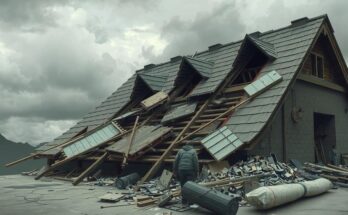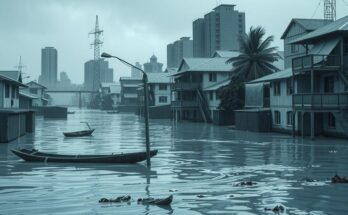This article outlines critical aspects of South Africa’s water crisis, highlighting inefficiencies, lack of access for millions, health impacts, and the urgent need for improvement in water management, especially as World Water Day approaches.
The South African Department of Water and Sanitation emphasizes the critical role of water, referring to it as essential to life. This article presents ten important facts about South Africa’s water crisis, coinciding with World Water Day, to raise awareness about the urgency of the water situation both globally and locally.
Notably, 50% of South Africa’s potable water is identified as non-revenue water, meaning it is lost due to system inefficiencies such as leaks. Furthermore, more than three million South Africans lack access to a basic water supply, with 52% of individuals in informal settlements around Johannesburg resorting to digging their own pit latrines due to inadequate facilities.
Globally, the United Nations Development Programme highlights that 443 million school days are lost each year due to illnesses resulting from poor water access. In Africa, a staggering 115 individuals die every hour from diseases tied to inadequate sanitation and contaminated water sources, as reported by the South African Human Rights Commission.
South Africa’s rainfall is notably lower than global averages, receiving 40% less than the international norm. Furthermore, despite being classified as a water-scarce nation, the average water consumption in South Africa is significantly above the global average, at 237 liters per person per day compared to the global average of 173 liters.
The distribution of water usage in South Africa reveals that 61% is allocated to agriculture, 27% to households, and only 7% to industry, according to the Council for Scientific and Industrial Research (CSIR). The most recent Blue Drop Report has highlighted concerning statistics, showing that 24 of the 144 Water Services Authorities in South Africa have failed to pursue compliance, with 40 of them noted as being in a critical condition.
Legally, the Water Services Act mandates a basic provision of 25 liters per person per day. However, during the severe water restrictions experienced during Cape Town’s ‘Day Zero’ crisis, the average was reported at 50 liters per person per day.
In conclusion, South Africa faces a significant water crisis characterized by high levels of water loss, inadequate access to clean water, and alarming public health implications. The statistics underscore the pressing need for improved water management, infrastructural compliance, and increased efforts to ensure equitable access for all citizens. Urgent action is required to address these critical issues and safeguard water resources for future generations.
Original Source: infrastructurenews.co.za




